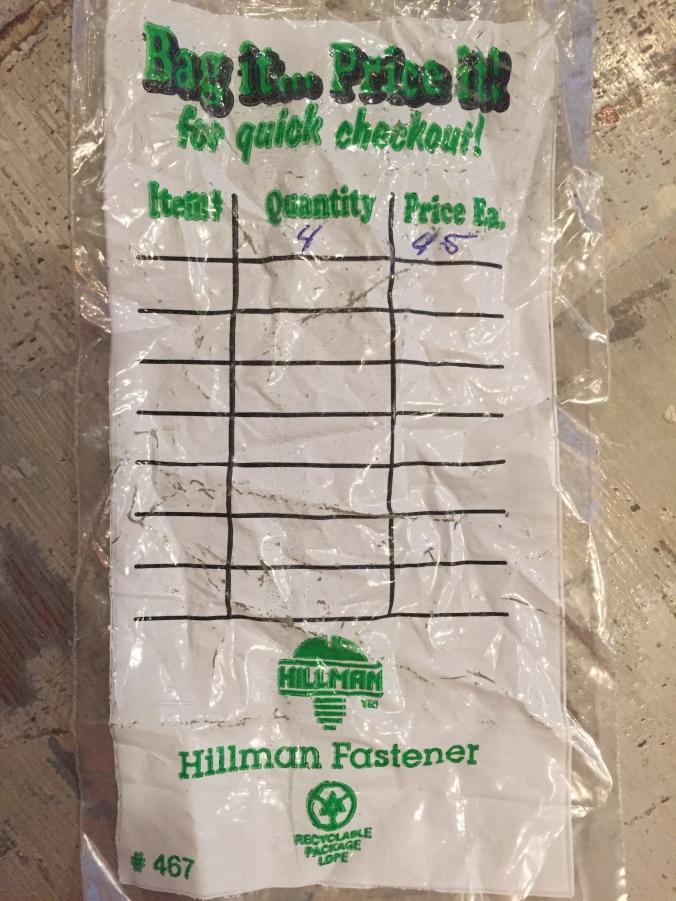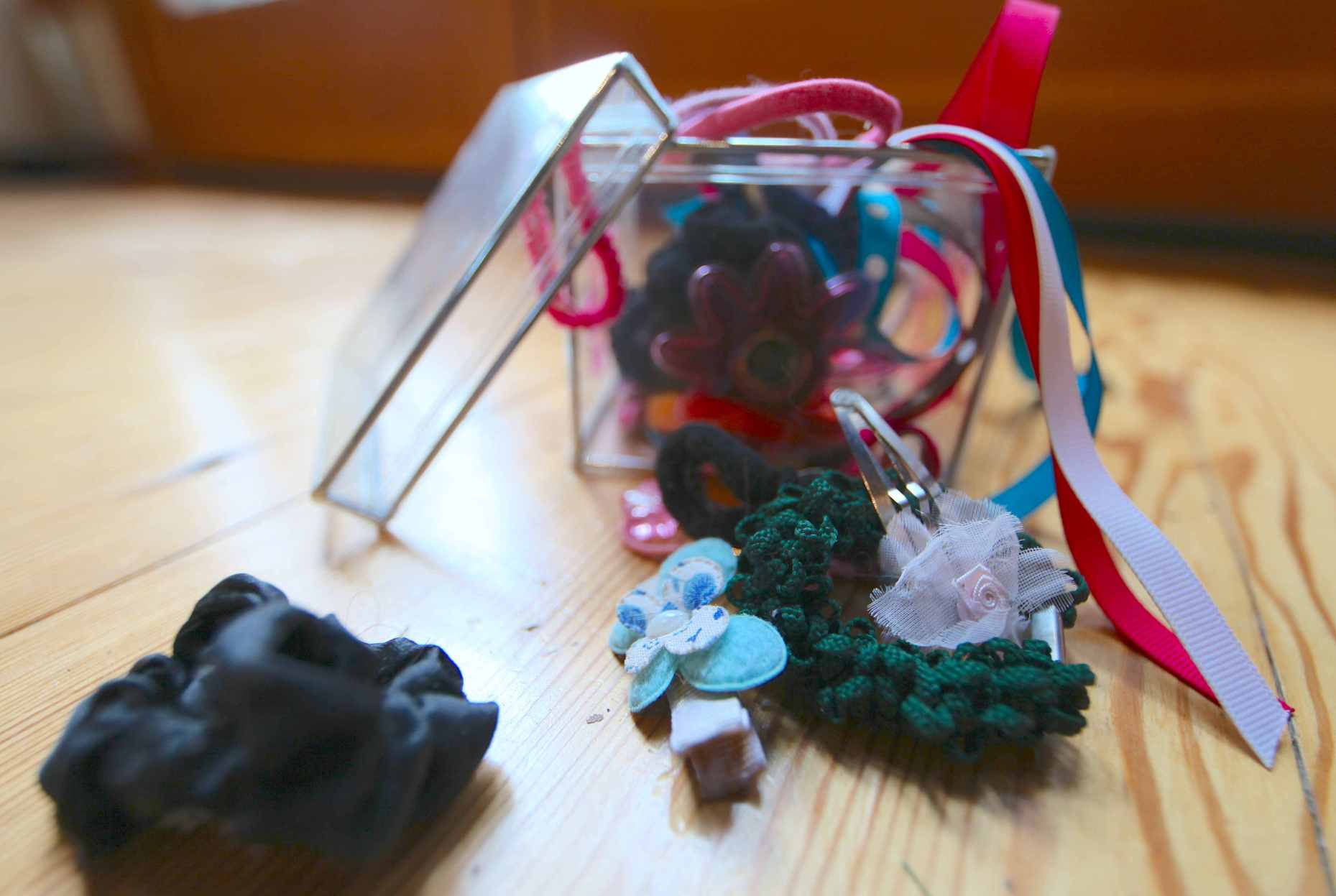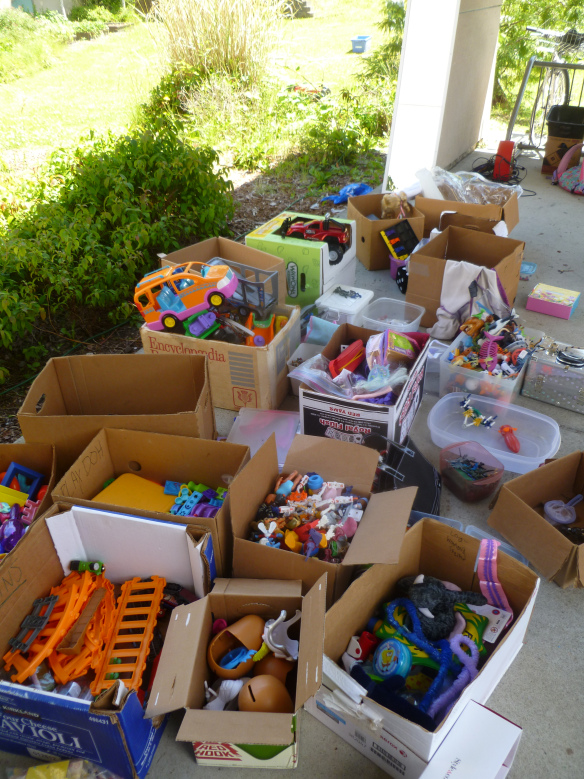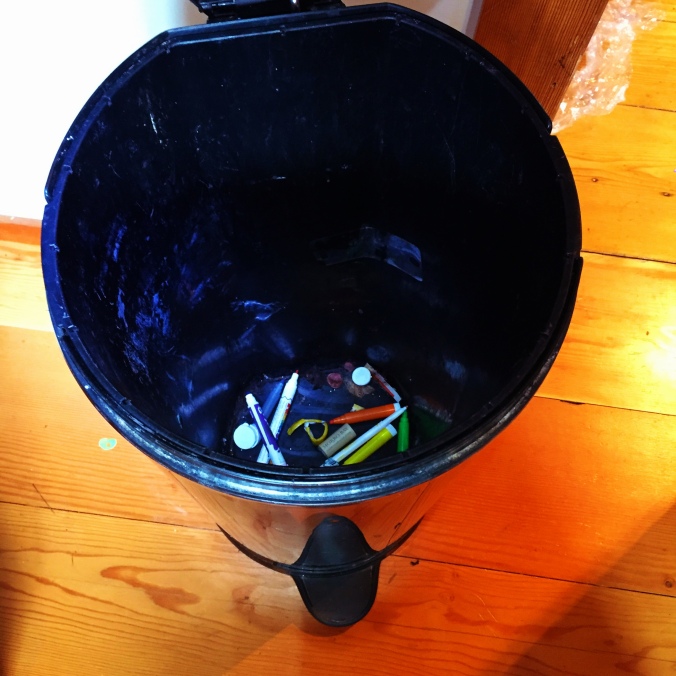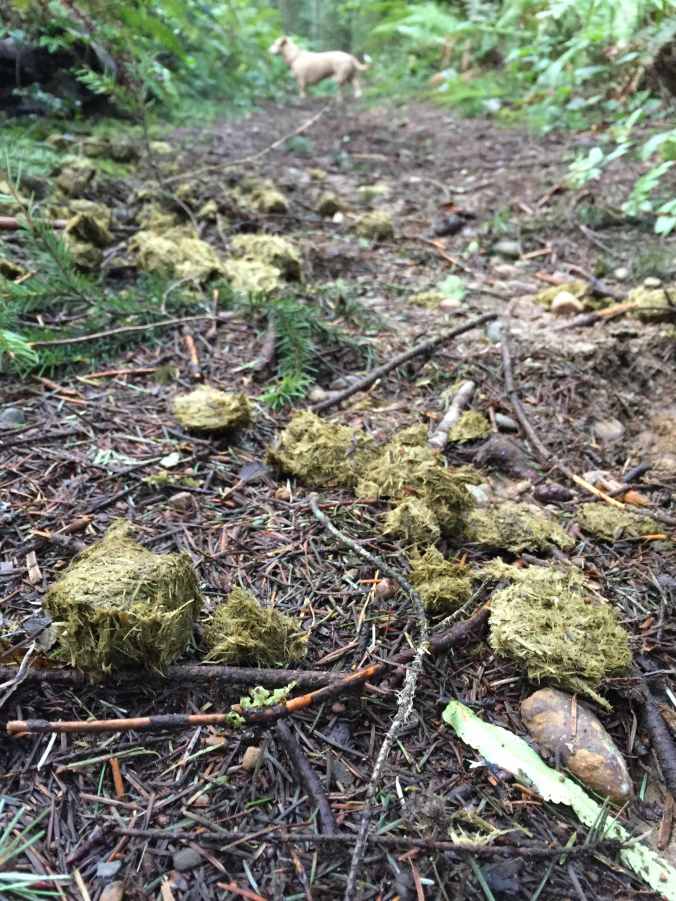Here’s an admission: We wash and dry all of our used plastic bags and then reuse them. Since the polyethylene in our bags will still be here in 2516, it’s hard for me to think of these things as a single-use product. Since plastic bags will still be here, but in tiny micro-pieces out in our environment, in 500 years, why not use them as long as we can? With a little water and soap, they’re ridiculously easy to clean. The drying of plastic bags just takes some thought.
My mother uses her refrigerator magnets and then sticks her bags to her fridge for drying. I think it makes her fridge look like the bag monsters we see at environmental events. Other folks just stick them onto the water faucet for drying, or on a nearby plant (the bag serves to then water the plant, yo!)
Well, I like to have a little drying station right near the sink where the bags can be hung easily. To that end, my sister gave me a wooden Gaiam plastic bag dryer a few years ago and this thing is now an everyday-used staple in our kitchen.

Gaiam Bag Dryer on My Sill © Liesl Clark
But here’s the thing: You can make your own from items you have in your house right now. Take a toothbrush holder (or if you don’t have one of those, just use a mason jar) and stuff some pebbles into it. Then poke chopsticks through the toothbrush holder holes and lodge them into the pebbles to set them firmly apart. If you’re using a mason jar, drill some chopstick-width holes into the top and insert chopsticks. Place your bag-holder by your sink and wash, hang, and reuse your plastic bags with glee!

DIY Bag Dryer © Liesl Clark
I’ve used a pretty vase, too, for this purpose as well, making sure I have a method for firmly setting the chopsticks in place. If you have some pretty sticks to use, like curly willow, rather than chopsticks, you can make an artistic-looking bag dryer for your sink that looks beautiful at all times. Jewelry trees are also cool to use. Have fun with it, because the end game is to create a space for drying plastic bags, like Ziplocs, so you never have to buy them again. We haven’t bought any in about 10 years and although we mostly use glass these days, the reusable bags come in handy for all kinds of projects the kids have at school or at home for holding things.
I posted a link to this article on my Facebook page and, what do you know, so many of my friends are willing to admit they, too, wash their plastic bags and dry them. There were so many different ways of drying the bags, I had to share them here. Check this out:
Anahata: I use, wash, dry and reuse. To dry I just slip half of a clean dishtowel into the bag and fold the other half over the outside. Then, I roll it up and the majority of the surface moisture is absorbed in the towel.
David: Liesl, bit mundane – decline plastic bags when offered but stuff used bags into my back pocket for picking up dog shit later [not sure about the energy cost to me or the planet of washing and drying] the trash hereabouts is incinerated and turned into heat and, as far as I know, toxin-free compost.
Jake: We’ve been doing this for years – not a problem at all! Yes, our cleanliness police love to think it’s dangerous, but like you said, no different than washing and reusing a pan or a plate. We wash lightly – depending on what was in it – sometimes just a rinse, and then hang on a wooden drier like in your pic. We also reuse other bags from food items, so rarely if ever need to buy plastic bags, etc. Frighteningly, I still have a tube of Saran wrap in our drawer from college – it’s now become a bit of a pride point. Thanks for sharing and encouraging us all to be a bit more friendly to the planet, and to ourselves!…Such simple things that make a big difference if everyone does it!
Melissa: I have seen too much plastic in the ocean, during dives, to be able to stay unaware. I source food not packaged in plastic to the best of my ability and if we do end up with plastic packaging, it had to be reusable if not recyclable. Plastic zip bags of hemp hearts or wild rice, for example, get rinsed and just turned over atop of utensils in their drying basket beside the sink where the drip dry for reuse. They tend to hold up significantly better than the zip lock type bags that are made with the intention of being used once and then tossed (shudder).
Jeanne: I have always washed them out with sudsy water, rinse, then I hang upside down on a wooden spatula smile emoticon I was lucky to grow up with resourceful Scot father. We didn’t use paper towel much either, and when we did, it also hung on the wooden spatula! So I’ve been doing this my whole life. I applaud all you do and you inspire!!!
Lissa: I used to use clothespins to pin them to a thin curtain rod in my kitchen window, but there was never enough room for all of the bags. Now we use a baby bottle drying rack.
Of course I got the baby bottle drying rack from my Buy Nothing group.
Ann: I put a pair of tongs in them and put them on the dish drainer, facing up. They dry out nicely that way.
Robynn: We wash them and then air dry on a mitten rack. I found it yeears ago in some crazy catalog and thought is would be perfect for bags. It makes me crazy to have them dry on the cooking utensils since they always seem to be in the way. We can get 10 bags (or 5 pairs of mittens!) on the rack!
Caroline: I dry them on slotted spoons, single chopsticks of varius sizes (missing their mates), I loved drying them on a mitten wrack as Robynn mentined but said wrack is in use for drying doggie raincoats & such nowadays.
Robynn: I dry the doggie rain coats & dog towels on a quilt racks that seem to pop up at the Salvation Army iwth increasing frequency. Home carpenters made some great sturdy racks to hold those heavy handmade quilts – but now no one seems to put (have?) quilts on them any more! smile emoticon
Caroline: I also use a large glass vase I got from Value Village for 50 cents years ago. I use branches that fall from trees, ut them in the vase & use them to dry plastic bags.
Tammy: yup, turn inside out, wash and they stay up alone, drying on the counter. dont buy anything ,just turn inside out and wash” For soups and messy stuff, ziplock has some great containers
Sandie: I put mine over mason jars and let them dry out or use a large wooden spoon in a jar for the larger bags.
What does your bag-drying rig look like?









